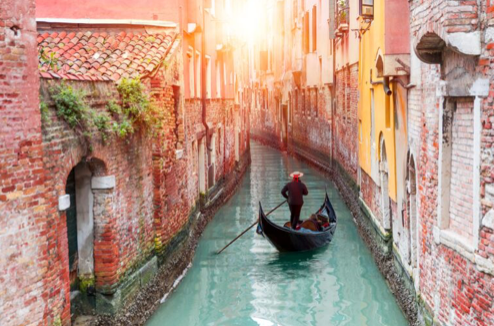Venice, Italy
- Kelli

- Jun 8, 2019
- 2 min read
The heart of Venice is the Piazza San Marco, otherwise known as St. Mark’s Square. This square is thriving with activity on most days, its massive open space surrounded by political and religious important buildings of classic Italian architecture. Its wide-open expanse is perfect for a breath of fresh air when traversing the city of canals and smaller streets. From the ringing of church bells to the Museo Correr and Museo del Risogrimento, there’s a reason that this piazza has remained the religious, political, and cultural center of Venice.

The Patriarchal Cathedral Basilica of Saint Mark is a prominent site on the Piazza San Marco. The Byzantine architecture is home to Roman Catholic Archdiocese of Venice. The rounded tops and gold-covered crosses present an incredible sight that compliments the already prominent presence of the church. Inside, there are 85,000 square feet of mosaics completed over 8 centuries. Wandering the church, the traveler will also see more than 500 columns as they take in this one-of-a-kind church.

Then there’s the legendary canal system of Venice that pass between the 118 islands. The largest of these is the Grand Canal, where 60% of traffic passes through. Of course, all the traffic in Venice is by boat or walking—because there are no roads. A classic way to see the city is by gondola rides, which are engineless and shallow boats directed through both larger and smaller canals. Walking the winding streets is another way to see the city. The many bridges, big and small, let the traveler wander through small streets and over the waterways that separate the islands.

Venice has always been a city that captures the heart and immediate attention of travelers when they simply see images of it. But, going there is far more than a normal travel experience. It is a highly unique and romantic way to leave life behind, embracing the floating city with a stroll through narrow streets or by boat on roads of water.
reprinted with permission from TRO



Comments